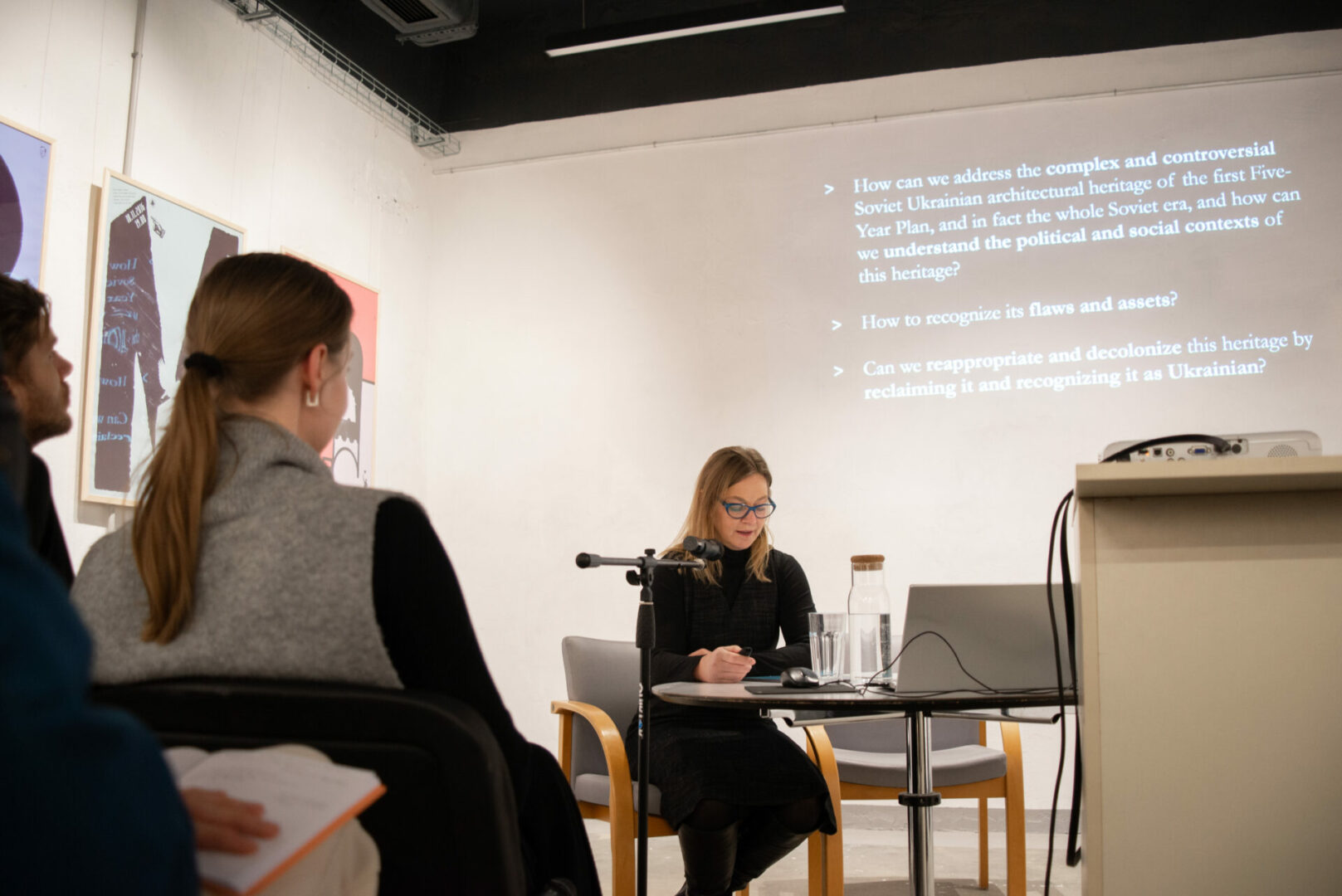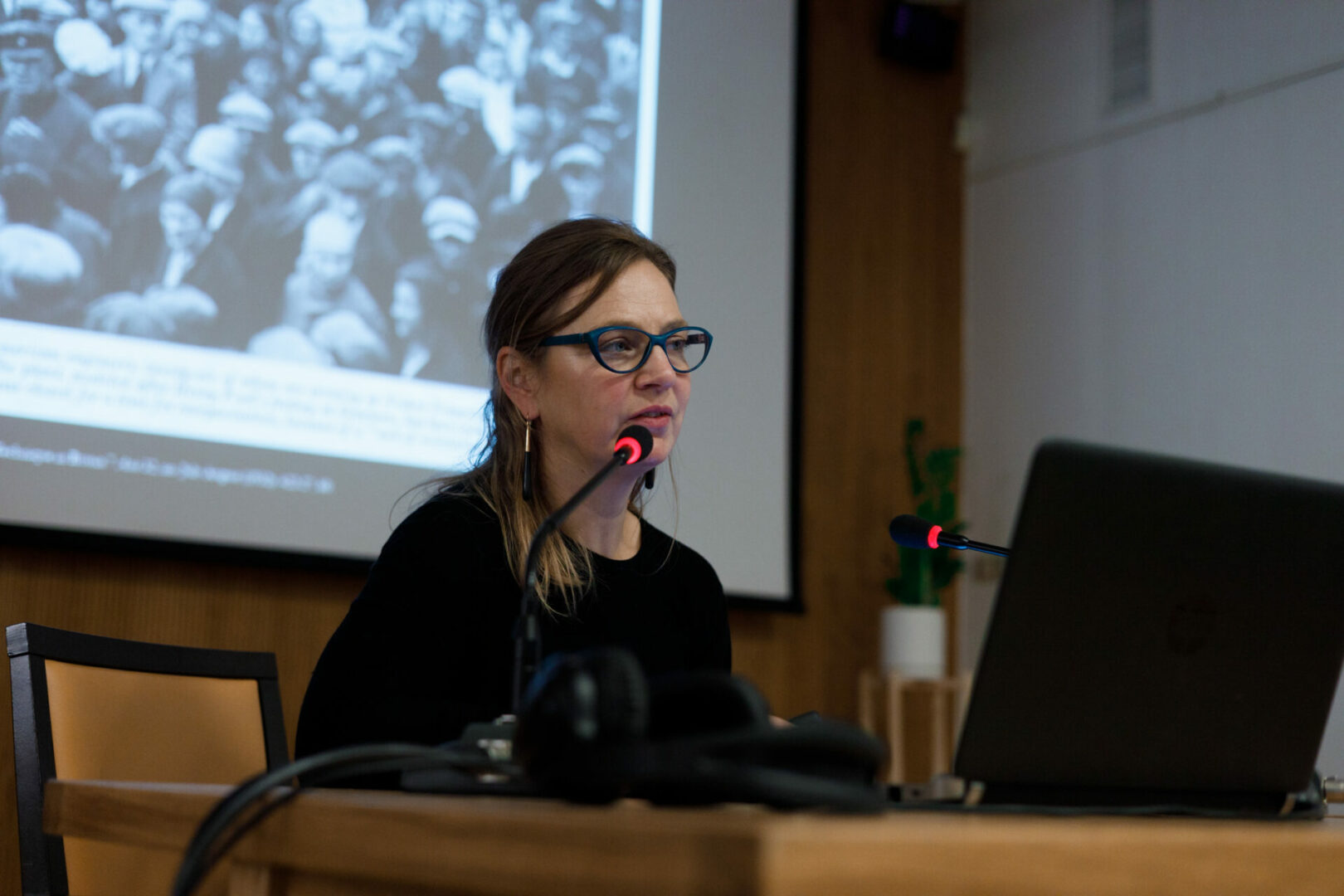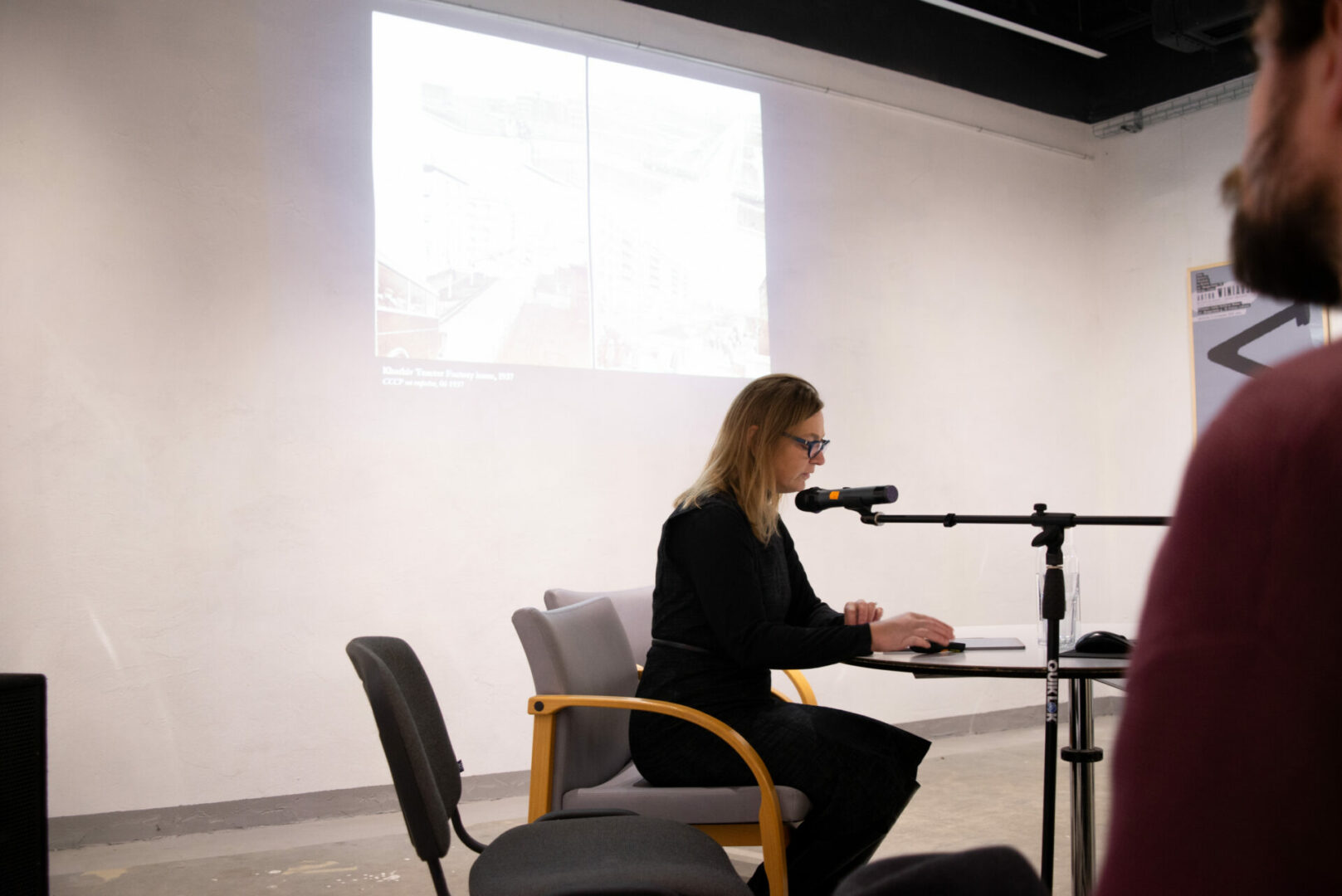“These students will be the designers of post-war Ukraine, and so it feels just unbelievably important to prepare them well to do that work. Intelligently, with heart, with a great degree of creativity and sensitivity” – Christina E. Crawford, from Emory University, Atlanta, GA.

Др. Крістіна Е. Кроуфорд – історикиня архітектури та містобудування, архітекторка та урбаністка, чиїми дослідницькими інтересами є соціалістичний простір та соціальне житло. Крістіна є професоркою мистецтвознавства Masse-Martin NEH (2022-2025), доценткою сучасної та новітньої архітектури на кафедрі мистецтвознавства Університету Еморі, а також лауреаткою премії Emory Williams Distinguished Undergraduate Teaching Award у 2021 році. Крістіна – запрошена викладачка Харківської школи архітектури. Ми поспілкували з Крістіною про її роботу у США та співпрацю з ХША, освітній курс для наших студентів та студенток, її наукові інтереси та риси, які є необхідними для майбутніх архітекторів та архітекторок.
First of all, tell us a bit about your research and teaching activities in the USA?
Where I teach in the US is Emory University, in Atlanta, Georgia. I teach four classes a year there. Three of those classes are for undergraduate students, and one class a year is for PhD students. I’m in the history of art department, and I’m the modern and contemporary architectural historian. It’s a little strange because I’m the only person trained as an architect, and I think very differently than my colleagues.
Many of the students in my classes might be biology majors or philosophy majors, so the discussions are very interesting because they’re coming from different points of view. It’s wonderful, but I miss architects a bit.
What I focus on in my research is mostly the beginning of the 20th century, the 1920s and 30s, quite specifically. My Ph.D. dissertation and then my first two books were about early Soviet architectural planning. I end up writing about buildings that are not very beautiful, that do not come from beautiful drawings, like the avant-garde. I research how buildings were actually built, what the architects were up to, what their relationship was with the state, what was the architectural brief, how architects navigated this system.
If you go around some districts of Lviv that are more distant than the city center, you can see all of these buildings, they all look the same to me and it's a bit sad.
You could define beauty in different ways, so maybe they’re not aesthetically beautiful, but there are some very interesting social ideas behind them. I find beauty in not the exterior.

So I know that you work in a private university. What are the specifics of the educational process in private universities in the USA?
The way that the system works in the United States is that the public universities are specific to each state. I live in Georgia. There’s a network of state universities, big and small. If you go to the state university in your state, maybe the tuition would be, let’s say, $20,000 a year. If you go to a private university, it’s maybe $65,000 a year.
And I think that in private universities there are less students allowed?
Typically they’re smaller. In my architectural history lectures there are 30 students and for my colleagues who teach in public universities they might have 150 students. So, in private universities you have more interaction with your professors, it’s kind of a “boutique” experience.
I think it's wonderful for students because they basically have to interact, right?
They have to interact with their classmates, they have to interact with the professors. They can’t disappear. They have to study. No way to just sleep on their lectures.

About the Kharkiv School of Architecture, how has your cooperation begun with us?
I think I first heard about the school from my very good friend Nadya Nilina, who taught the first year that the school existed. She asked me to give a guest lecture in her class, and I couldn’t do it, but I started following the school on social media.
I was just generally aware of you. And then the war started. I have to say that for somebody who feels very connected to Ukraine, being outside and just not knowing what to do to be helpful was difficult. I started to give a lot of lectures in the US about my Ukrainian research because people were curious once the war started.
And often when you give a lecture at another university, you receive an honorarium. So, I decided to collect all that funding and just give it to the school. After a while, I made a connection with Iryna Matsevko and decided that I would teach something when on sabbatical at my university. What I can give is my time and my expertise.
Can you tell more about your course for the KhSA? What is it about?
It’s called The Architect and the City. Each week we focus on a specific architect who decided that he could solve the problem of the city. There are a lot of egos in architecture, as I’m sure you’re aware.
These were all kinds of individual architects, starting at the end of the 19th century, who were going to solve the problem of the city. The idea behind the course is that we have a text that was written by the architect, who’s explaining what he thinks that he’s doing, and then we look at the model that the architect has developed and then we discuss it. The students also developed comparisons between one of our historical models and a Ukrainian project.
They get from this course familiarity with certain important urban models of the 20th century. So when they go to talk to a colleague in Spain or Japan, they find a common language there through these well-known models.
The class was in English, and it’s really hard to read in the second language. You’re struggling both with the comprehension of the language and also comprehension of the topic, the depth, the plot. But the students did wonderfully.
They also learn from this course about how to make an architectural argument, an urban argument, and how that argument then results in some sort of urban form. We have a class blog, basically, and they have to write little reading responses to the blog. And then the discussion is well set up.
Do you like working with Ukrainian students in a Ukrainian context?
Oh, they’re wonderful. There are seven students and I got to know each of their personalities. When I came here [to Lviv] the first day, we already knew each other, so that was really great.
The very first response to the class blog that I asked them to write was not about a text, but about their favorite form of transportation in the city. Very quickly I got a sense of their personalities from those answers.
I mean, this is a very, very, difficult time to be a student, to be anything in the context of the war. But they are diligent, they’re doing the work, and the discussions have been really excellent. So, it’s been a great pleasure to teach them.

What do you think about the specifics of our educational program, what is your review on it?
I would say that the school feels very similar to me to small architecture programs in the United States. I think that size matters, so keeping it fairly small is important for having a dialogue. You can’t hide under the desk.
Also, the teaching faculty is very young here, right? I don’t know so much about architectural education in the Soviet period, or even the 20 years or so after independence, but I’ll guess that the pedagogy is still quite empirical, quite fact-based in the public institutions. And here at the KhSA it seems like a much more conversational, open approach.
What is the most inspirational part of your work here?
These students will be the designers of post-war Ukraine, and so it feels just unbelievably important to prepare them well to do that work. Intelligently, with heart, with a great degree of creativity and sensitivity. So it seems to me there’s almost no field that’s more important to continue to prepare young Ukrainians for than architecture.
The last question, which qualities for architects are crucial?
Probably from outside of the field, what the public might think, is that what’s important in a school of architecture is to learn Skills. Technical skills, drafting. I think that can actually be taught very quickly.
What’s more important is being able to think analytically. To be able to assess, to pose the design problem correctly, to ask a lot of questions.
I think that for an architect, the most important part is the intelligent formulation of the problem. And then the design follows. You have to be open to change. You have to be open to critique. And to be ready to fail, which happens. In English we say that you have to be “thick-skinned”. You accept the criticism and then you make changes and you keep moving.